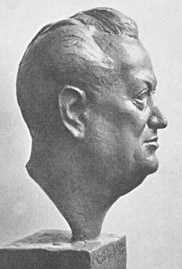Germanenorden

The Germanenorden (Germanic or Teutonic Order, not to be confused with the medieval German order of the Teutonic Knights) was a völkisch secret society in early 20th century Germany. It was founded in Berlin in 1912 by Theodor Fritsch and several prominent German occultists including Philipp Stauff, who held office in the List Society and High Armanen Order as well as Hermann Pohl, who became the Germanenorden’s first leader. The group was a clandestine movement aimed at the upper echelons of society and was a sister movement to the more open and mainstream Reichshammerbund.[1]
The order, whose symbol was a swastika, had a hierarchical fraternal structure based on Freemasonry. Local groups of the sect met to celebrate the summer solstice, an important neopagan festivity in völkisch circles (and later in Nazi Germany), and more regularly to read the Eddas as well as some of the German mystics.[2]
In addition to occult and magical philosophies, it taught to its initiates nationalist ideologies of Nordic racial superiority and antisemitism, then rising throughout the Western world. As was becoming increasingly typical of völkisch organisations,[citation needed] it required its candidates to prove that they had no non-Aryan bloodlines and required from each a promise to maintain purity of his stock in marriage.
In 1916, during World War I, the Germanenorden split into two parts. Eberhard von Brockhusen became the Grand Master of the "loyalist" Germanenorden. Pohl, previously the order’s Chancellor, founded a schismatic offshoot: the Germanenorden Walvater of the Holy Grail.[3][4] He was joined in the same year by Rudolf von Sebottendorff (formerly Rudolf Glauer), a wealthy adventurer with wide-ranging occult and mystical interests. A Freemason and a practitioner of sufism and astrology, Sebottendorff was also an admirer of Guido von List and Lanz von Liebenfels. Convinced that the Islamic and Germanic mystical systems shared a common Aryan root, he was attracted by Pohl’s runic lore and became the Master of the Walvater's Bavarian province late in 1917. Charged with reviving the province's fortunes, Sebottendorff increased membership from about a hundred in 1917 to 1500 by the autumn of the following year.[5]
The Munich lodge of the Germanenorden Walvater when it was formally dedicated on August 18, 1918 was given the cover name, the Thule Society,[6] which is notable chiefly as the organization that sponsored the Deutsche Arbeiterpartei (DAP), which was later transformed by Adolf Hitler into the National Socialist German Workers' Party (Nazi Party).